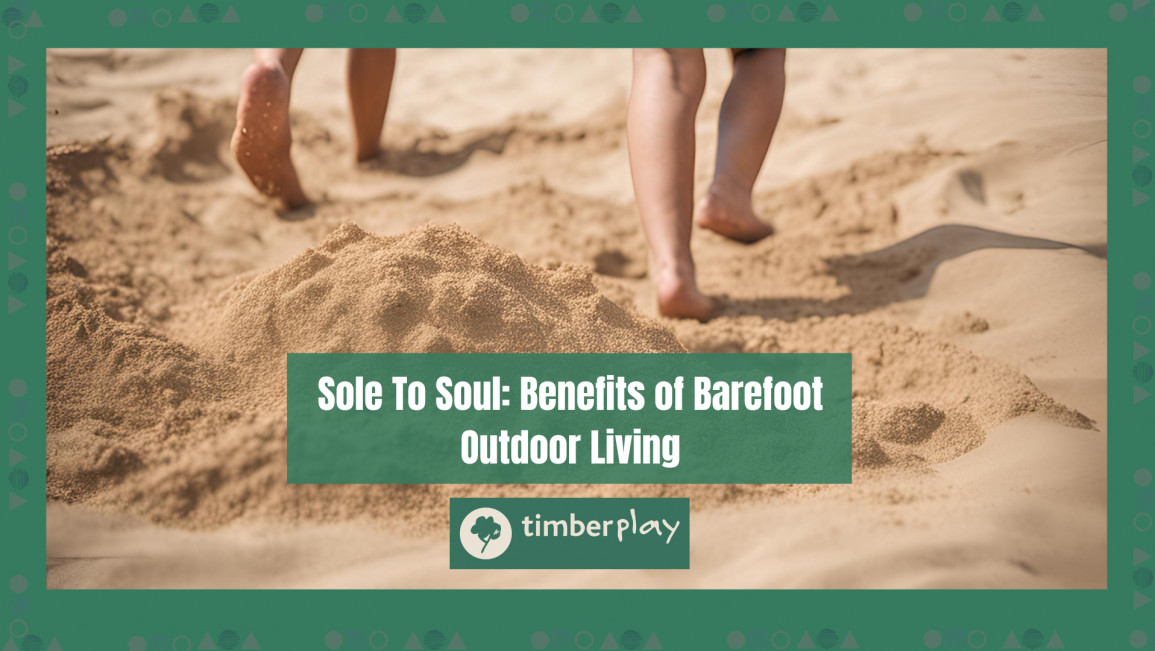Ideas and Insights
Sole To Soul: The Benefits of Barefoot Outdoor Living
Being outdoors barefoot, often referred to as "earthing" or "grounding," has gained attention for its potential benefits to physical and mental health. This practice involves walking or standing barefoot on natural surfaces like grass, soil, or sand, and connecting directly with the Earth's energy. While it may seem simplistic, various studies and anecdotal evidence suggest that it offers a range of benefits.
Physical Health Benefits
- Improved Foot Health: Walking barefoot allows the feet to move naturally, which can improve foot strength and flexibility. Shoes often restrict the natural movement of the feet and can lead to weakened muscles over time. Going barefoot can help alleviate common foot problems such as flat feet, bunions, and plantar fasciitis.
- Enhanced Balance and Posture: Walking barefoot engages the muscles and nerves in the feet, which can enhance proprioception – the body's ability to sense its position and movements. This can lead to improved balance and posture, reducing the risk of falls and injuries, particularly in older adults.
- Better Circulation: The action of walking barefoot stimulates the soles of the feet, which can increase blood flow and improve circulation. This can be particularly beneficial for individuals with diabetes or other conditions that affect circulation.
- Natural Detoxification: The practice of earthing is believed to help the body rid itself of toxins. Direct contact with the Earth is thought to neutralise free radicals in the body, which can reduce inflammation and support overall health.
Mental Health Benefits
- Reduced Stress and Anxiety: Being barefoot in nature has a calming effect, reducing stress and anxiety levels. The physical act of grounding oneself can have a meditative quality, promoting relaxation and a sense of well-being.
- Enhanced Mood: Exposure to natural environments is known to boost mood and mental clarity. Studies have shown that spending time in nature can decrease symptoms of depression and improve overall mental health. The practice of earthing can amplify these benefits by providing a direct physical connection to the Earth.
- Improved Sleep: Grounding has been linked to better sleep patterns. The Earth's natural electric charge can help regulate the body's circadian rhythms, leading to improved sleep quality and duration. This can be particularly beneficial for individuals suffering from insomnia or other sleep disorders.
The Science Behind Earthing
The concept of earthing is based on the idea that the Earth's surface has a negative electric charge. When we come into direct contact with the ground, electrons from the Earth are absorbed into our bodies, which can have several beneficial effects.
- Anti-inflammatory Effects: Inflammation is a common underlying factor in many chronic diseases. The influx of electrons from the Earth can neutralise free radicals and reduce inflammation. Research has shown that grounding can reduce markers of inflammation and improve immune response.
- Pain Relief: Many individuals report experiencing pain relief after earthing. This may be due to the reduction in inflammation and improved circulation that comes with grounding. Studies have noted that grounding can significantly reduce pain and improve the quality of life for people with chronic pain conditions.
- Improved Heart Health: Preliminary research suggests that grounding can positively affect heart health by reducing blood viscosity – a factor that contributes to cardiovascular disease. By thinning the blood and improving circulation, grounding can support overall cardiovascular health.
Practical Tips for Safe Barefoot Activities
- Choose Safe Surfaces: Start by walking barefoot on safe, clean surfaces such as grass, sand, or soil. Avoid areas with sharp objects, chemicals, or other hazards.
- Gradual Transition: If you are not used to walking barefoot, start slowly to allow your feet to adapt. Begin with short sessions and gradually increase the duration as your feet become stronger.
- Regular Practice: Incorporate barefoot activities into your daily routine. Whether it's a walk in the park, gardening, or simply standing on your lawn, regular practice can maximise the benefits.
- Mindful Movement: Pay attention to your body and move mindfully to prevent injuries. Be aware of your surroundings and the surfaces you are walking on.
Our play equipment such as climbing structures can be implemented into barefoot practices. The wide width of the beams allows a sturdy platform for users without requiring insane balancing skills and the timber material is soft on feet. The beams used for climbing structures are each made from a whole timber and are treated with a natural coating to prevent splinters. This is a great opportunity for children to gain a closer connection with nature, increasing their exposure to all the benefits listed above.
Watch a video to see this in action here.
Being outdoors barefoot offers a simple yet powerful way to enhance both physical and mental health. By connecting directly with the Earth, individuals can experience improved foot health, better balance and posture, reduced stress and anxiety, and even enhanced cardiovascular health. Whether through scientific research or personal experience, the benefits of earthing are compelling, inviting us to take off our shoes and reconnect with the natural world.
By embracing this practice, we can not only improve our own well-being but also foster a deeper connection to the environment around us.
